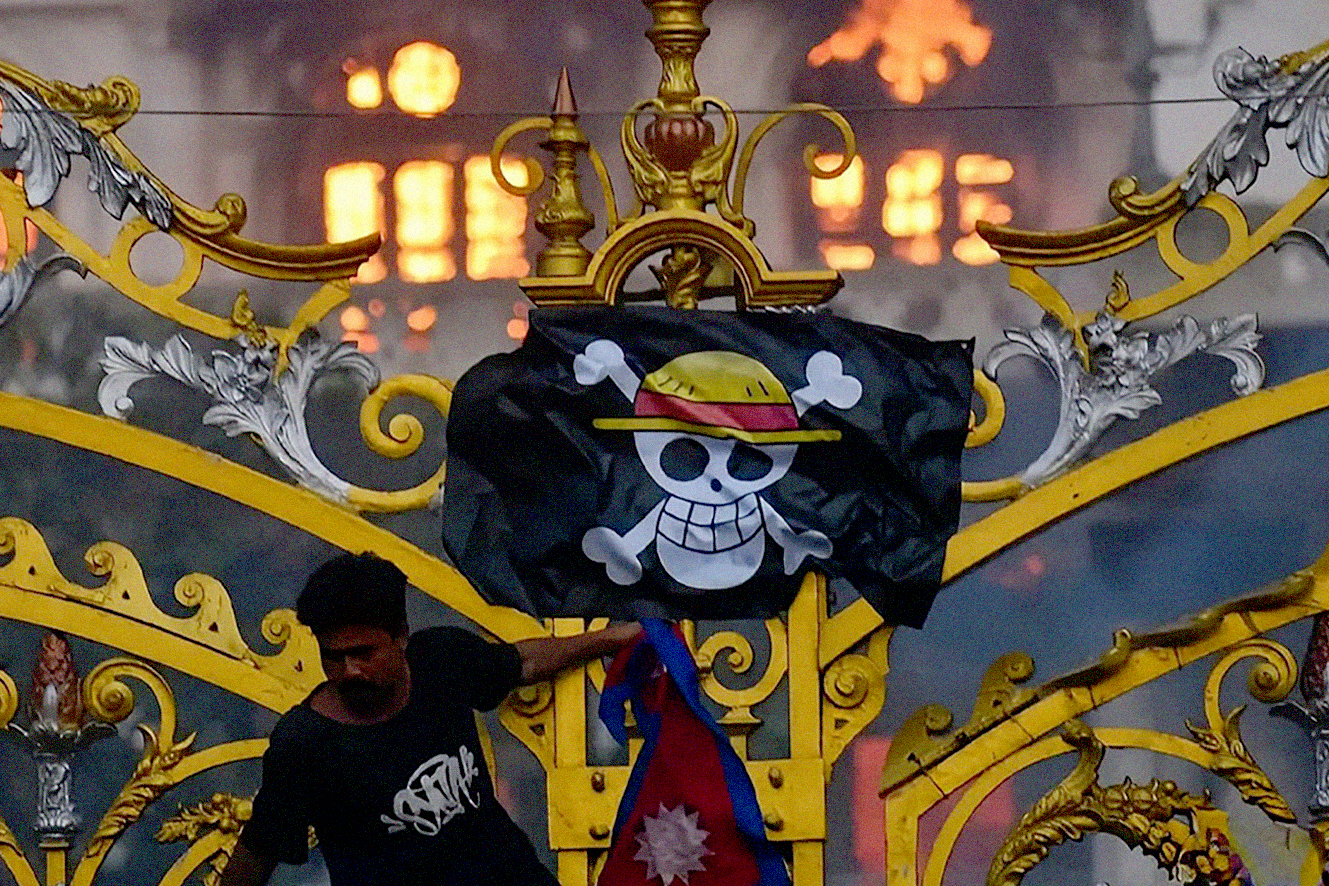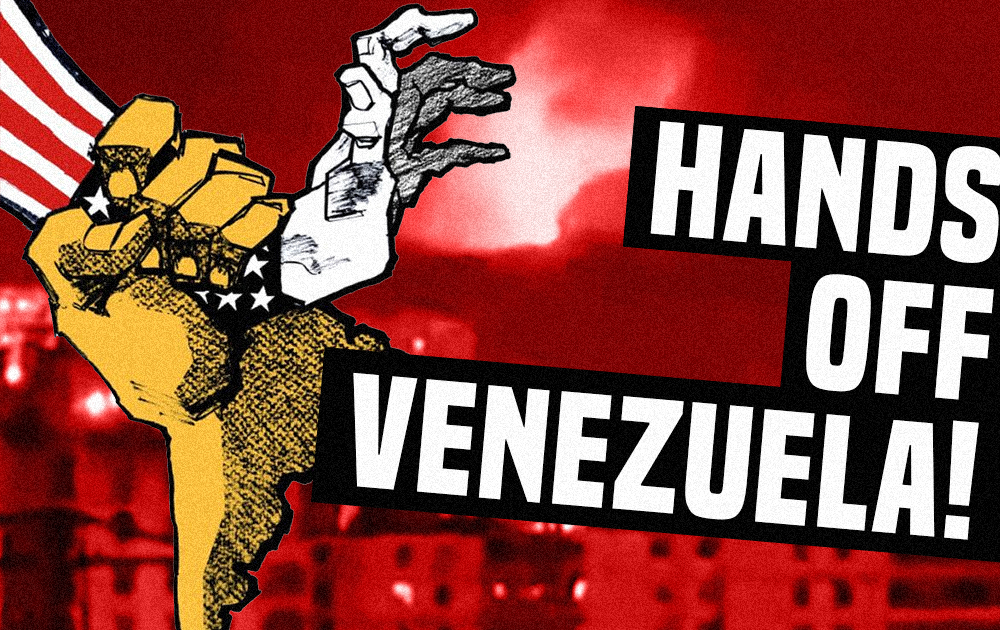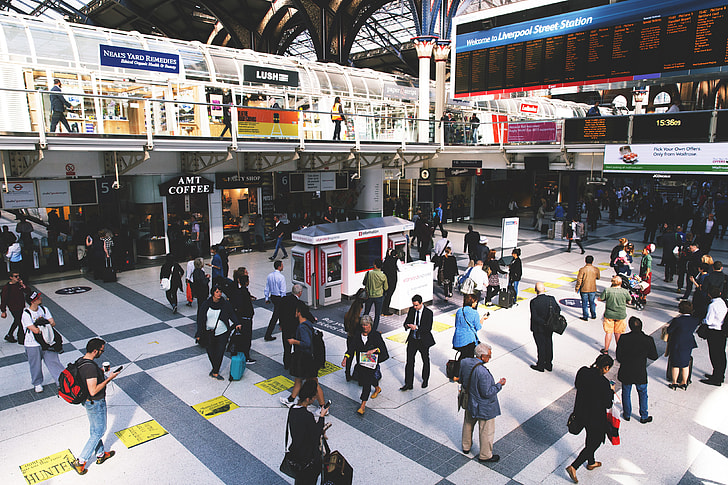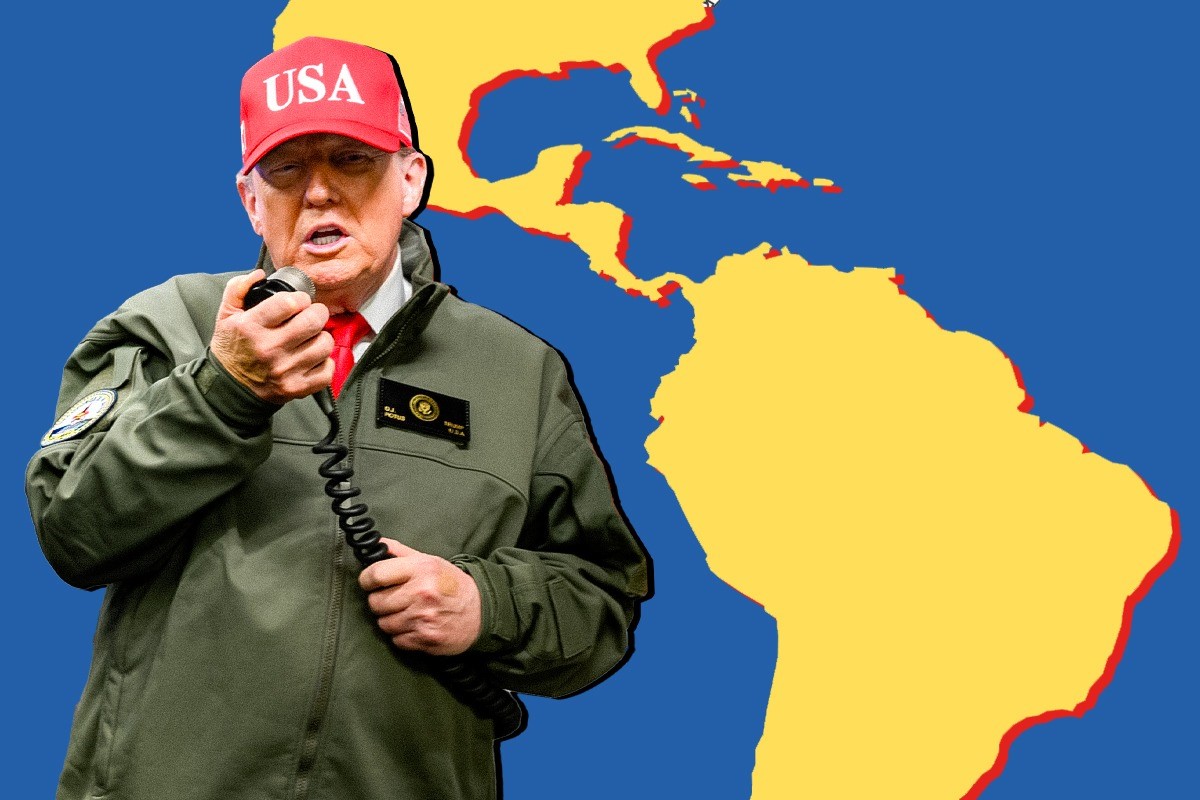One day, it seems that a country is calm and the ruling clique there is firmly ensconced in power. The next day, the revolutionary masses stand in front of the burning parliamentary building. The police are gone, the MPs have fled, and so too has the Prime Minister. The photographs and videos that recently emerged from Nepal were astonishing. They are also astonishingly similar to the scenes that we’ve already seen: in Sri Lanka, Bangladesh, Kenya, Indonesia.
What is the meaning of these events? Some on the left, impressed by these scenes, allow themselves to be swept along by the tide without stopping to ask where the tide is headed. They act like cheerleaders for the masses, which is the last thing the masses need in a revolution.
Others cast a more jaundiced eye on it all. They look at Nepal, Sri Lanka, or any of these other examples, and they compare them to the schema they have lodged in their heads of what a revolution should look like.
They don’t find soviets. They don’t find workers’ councils. Rather, they find the masses organised, to the extent they are organised at all, around accidental leaderships, or even mere social media hashtags. They don’t find red flags. They find Sri Lankan flags, Kenyan flags, Bangladeshi flags and Nepali flags.
They find the few demands of these movements to be hazy and limited, especially compared to the finished programme of socialist revolution. And they point to the indisputable fact that, so far, these revolutions have scarcely made any fundamental changes. They scornfully declare that these are no revolutions at all, then go back to sleep and ask to be woken up when the real revolution arrives.
As genuine communists, we can neither allow ourselves to be impressed by appearances, nor can we expect revolutions to fit preconceived schemas. We have to get to the essence of concrete events and draw concrete lessons.
What then is our attitude to these unfolding events?
These revolutions, from Sri Lanka to Nepal, all have their unique characteristics. But by now, there are clear and unmistakable patterns emerging. Taken together, they tell us a great deal about the character of the epoch we’ve entered.
The power of the masses
The first thing that has to be said is that we could not have asked for more, in terms of exertion or heroism, from the revolutionary masses. They have shown what enormous latent power they possess.
Three years ago, when the people surged forward towards the presidential palace in Sri Lanka, the first domino to fall, the police were brushed aside like mosquitoes. The Rajapaksas fled. No other force in society could even remotely match this power.
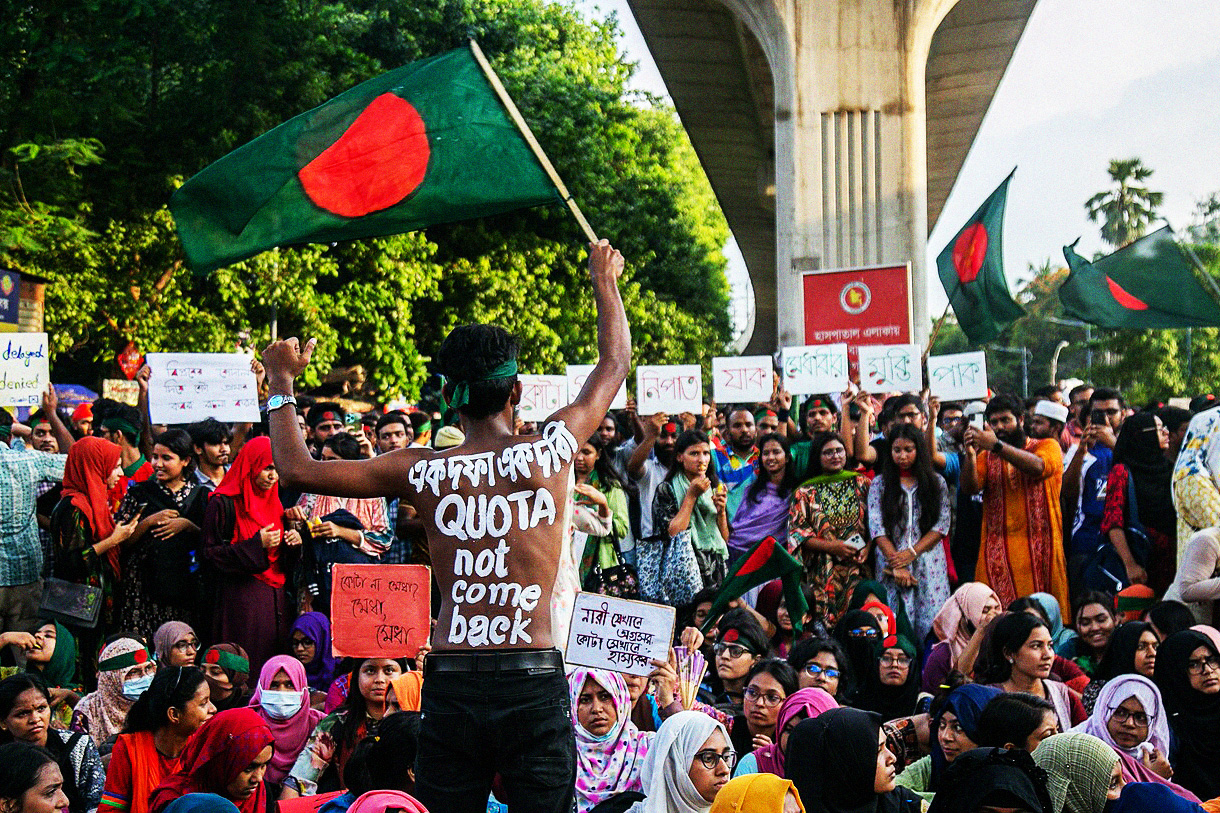
The regime found itself helplessly suspended in midair. The revolution could have smashed the regime there and then. In actual fact, power was really in the hands of the masses on the streets. All that remained to be done was to declare the old regime deposed. But the masses were not conscious that they held the power, and there was no party authoritative enough to seize power in their name.
So, the same evening that this stunning victory had been achieved, there was nothing left for the revolutionary masses to do but vacate the presidential palace and return home. After which, the old despised parliament, packed with a Rajapaksa party majority, selected its replacement for president.
On 5 August 2024, the regime in Bangladesh likewise found itself suspended in midair. The police, who had unleashed a reign of terror in the weeks previously, declared a ‘strike’. In fact, they had fled the scene, terrified of the reprisals of the masses. 450 of the country’s 600 police stations were smouldering ruins. The hated Prime Minister Sheikh Hasina was bundled into a helicopter by the military tops and carried out of the country.
The revolutionary masses had the power and could have organised their own revolutionary government. But, again, they were not conscious of their power. The old regime was defeated. The old generals and judges should have been and could have been cast aside. Instead, the student leaders came to negotiate with the defeated generals. They agreed to an interim government led by an ex-banker where they would sit in token ministries.
In Kenya, after all the sacrifice, all the bloodshed, even less has been achieved. Ruto remains entrenched in power.
The central enigma in all these cases is the contrast between the overwhelming power that the masses demonstrated and how little of substance has really changed.
This is the result of one missing factor, which we will continue to return to: the absence of revolutionary leadership. Without leadership, confusion has reigned regarding the programme and end goal of the revolution. All these revolutions have stopped halfway.
But to those who say that these were not revolutions at all, we say: no other kind of revolution was possible under these circumstances. Lenin answers this objection definitively in his reply to those who denied that the 1916 Easter Rising in Ireland had any revolutionary significance, that it was a mere ‘putsch’:
“To imagine that a social revolution is conceivable without revolts of small nations in the colonies and in Europe, without the revolutionary outbursts of the petty bourgeoisie, with all its prejudices, without the movement of non-class-conscious proletarian and semi-proletarian masses against the oppression of the landlords, the church, the monarchy, the foreign yoke, etc. – to imagine that is tantamount to repudiating social revolution. Only those who imagine that in one place an army will line up and say, ‘We are for socialism’ and in another place another army will say, ‘We are for imperialism’ and believe that this will be the social revolution, only those who hold such a ridiculously pedantic opinion could vilify the Irish Rebellion by calling it a ‘putsch.’ Whoever expects a ‘pure’ social revolution will never live to see it. Such a person pays lip service to revolution without understanding what revolution is.” (Lenin, The Discussion on Self-Determination Summed Up)
The problem of leadership
There is a lack of clear leadership. But the point is, the conditions of the masses are too desperate to wait until this missing factor arrives on the scene. The youth are least of all inclined to wait patiently until the conditions are just right.
Another striking feature of all these revolutionary upheavals is the way in which a whole new generation of youth has burst onto the scene. The youth, robbed of a future, having the least to lose and the most to gain, being the most energetic layer unburdened by the weight of past defeats, have been on the front line everywhere.
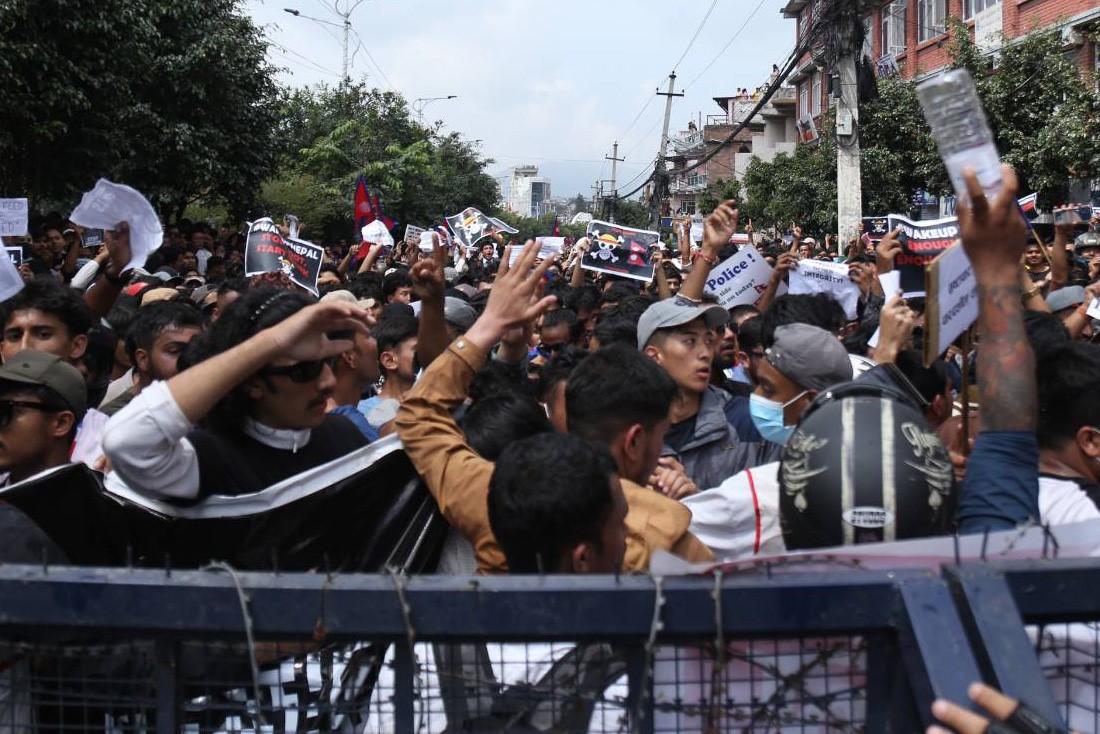
In Nepal and Kenya, they are calling this the ‘Gen Z Revolution’. In Serbia and Bangladesh, huge movements of the students, like a lightning rod, have drawn in the anger of millions of ordinary workers and poor people.
Although there are differences from country to country, the youth have generally thrown up what little leadership has emerged. Do they bring confusion? Of course they do. Whose fault is that? We answer emphatically: it is the fault of the leaders of the workers’ organisations whose job it is to lead.
The condemnable fact is that their cowardly absence has been the shameful counterpoint to the bravery of the youth in the vanguard.
Just as the generals in Kenya and Bangladesh kept the soldiers confined to barracks to stop them from being infected with revolution, so the heavy battalions of the working class have been ‘confined to barracks’ by the workers’ leaders.
This is criminal. Ultimately only the working class has the power in its hands to smash capitalism at its root, which is the real source of all the misery and suffering of the masses.
The youth have, in many cases, tried to connect with the workers. The students in Serbia, to their credit, correctly called on the trade unions to organise a general strike against the Vučić regime, and have called for the formation of workplace zborovi (mass assemblies). But the narrow-minded bureaucrats in the trade union offices resisted all such calls, which they saw as encroaching on their own little fiefdoms.
In Kenya, the miserable General Secretary of the COTU-K trade union centre even came out in defence of Ruto’s regressive Finance Bill 2024 that sparked the whole movement!
And at the high point of Sri Lanka’s aragalaya (‘struggle’) in 2022, the idea of a hartal (a revolutionary general strike) circulated widely. But the trade unions refused to issue the call for anything other than a one-day strike.
Against corruption
Throughout these movements, we have seen how the masses have targeted the most obvious and most potent symbols that elicit their rage.
The rotten ruling cliques that dominate the country, as hated for their brutality as for their corruption, have drawn upon their heads all the fury of the masses: the Rajapaksa clique in Sri Lanka; the Hasina clique in Bangladesh; the Ruto clique in Kenya; the rulers and their ‘nepo kids’ in Nepal; the politicians bestowing fabulous pay rises on themselves in Indonesia; Vučić and his thugs in Serbia.
Above all, the masses in Sri Lanka, Kenya, Bangladesh, Nepal, Indonesia and elsewhere are striking in the first instance against corruption.
Many sceptics point to this and scoff that this proves their point that these are not revolutions. A real revolution, they say, would be against capitalism, not corruption.
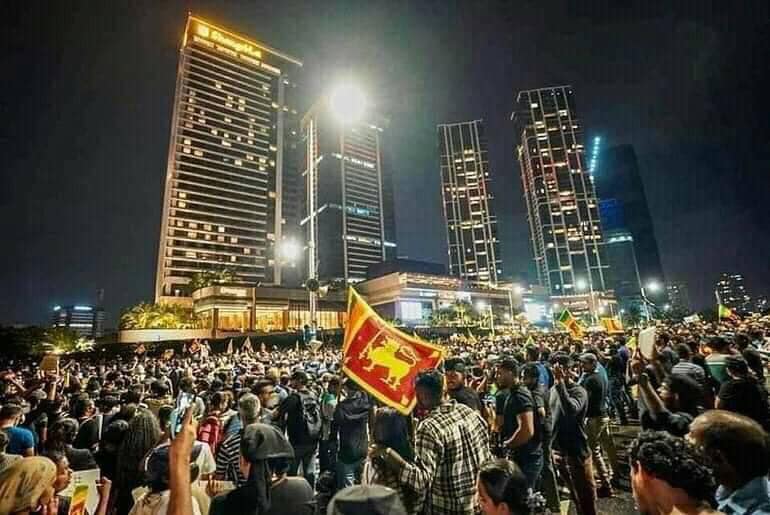
But corruption is only the most potent and extreme symptom of all the rottenness of the capitalist system itself. The masses are filled with a deep sense of injustice, hatred and indignation when they think of the truly staggering levels of wealth that surrounds them. But, as they see it, that wealth is being siphoned off by a corrupt elite.
Western commentators point to corruption as an unfortunate feature of the so-called ‘Third World’ and point to it as the cause of underdevelopment. Of course, they do so to cover the tracks of imperialism, the foremost cause of poverty and underdevelopment.
But similar corruption is rife in all capitalist countries, not least of all in Europe. Consider the similarity between the crime of the Novi Sad canopy collapse in Serbia and the Tempi rail disaster in Greece which both brought huge masses onto the streets. In both cases, corrupt politicians are to blame. They count the cash they’ve made through graft and corrupt deals, while the poor count their dead from the disasters that corruption caused.
Meanwhile, a poor rickshaw driver in Sri Lanka or Bangladesh need only compare their pangs of hunger with opulent vanity projects like the Lotus Tower in Colombo or the Padma Bridge across the Ganges to feel the enormous gulf separating them from their rulers. While Jakarta is a living hell for the poor, the Indonesian government is busy constructing a new, glittering capital city many miles away from the poverty and grime of the present capital.
When the masses came out against the regime in Sri Lanka, in Indonesia, in Bangladesh, in Nepal, it was these pampered hypocrites, these ‘leaders of the nation’, that they struck out at. They instinctively struck these rotten cliques right at their head, and gave us those scenes of stormed parliament buildings, ransacked presidential palaces, and burning party offices and MP’s residences.
The masses showed the right instinct in striking at these corrupt gangsters who, through office, enrich themselves to the nth degree. Ultimately, however, if these people are booted out, others are in the wings waiting to take their place. The point is, to end corruption, we must end the rule of capital. And that means abolishing private property, and smashing the armed bodies of the capitalist state, which constitute the real source of the ruling class’ power.
Hatred of all parties
There is a feeling throughout almost all of these movements that it is not just the present ruling clique, but all politicians and parties that are as bad as each other. The so-called ‘opposition’ has proved in the majority of cases to be no less rotten.
And it is not just corruption for which they are hated. The very fact that they participate in the same hated parliamentary game, and speak the same language laden with lies, taints the opposition along with the incumbents.
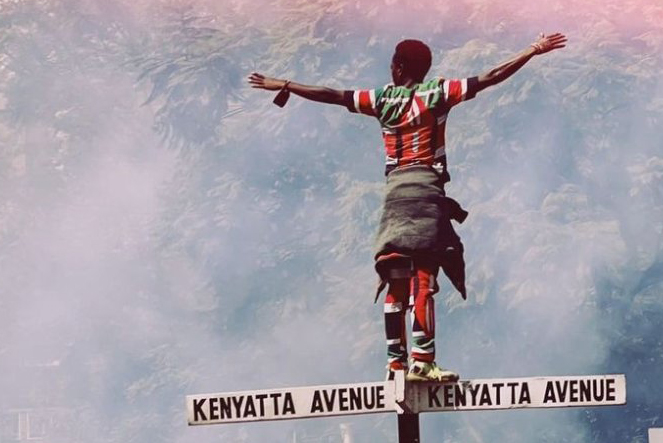
Thus, in Sri Lanka, alongside the slogan, ‘Go home Gota’ targeting the corrupt president Gotabaya Rajapaksa, the masses raised the slogan, ‘Go home 225’ – that is to say, out with all 225 MPs that make up the parliament.
In Kenya, the youth refer to the MPs as ‘MPigs’. Quite right! While legislating to make the poor poorer, these ‘MPigs’ – all of them – have their snouts buried in the trough of parliamentary expenses and privileges. The Kenyan youth want nothing to do with Ruto, but neither do they want anything to do with opposition leaders like Odinga, who was soon to be found cowering in fear of the revolutionary youth behind Ruto’s boot.
Their slogan, ‘tribeless, leaderless, partyless,’ captured a very healthy instinctive rejection of all those tribal-capitalist gangs that are called ‘political parties’ in Kenya.
But if all the existing parties are tools of this or that corrupt faction of the ruling class, does that mean the workers and youth can do without a party full stop? It does not. The situation cries out for a party and leadership of their own that represents their interests.
The left just as bad
This rejection of all political parties also reflects the fact that, in the majority of cases, the so-called ‘left-wing’ parties are just as bad as the right-wing parties!
In some cases, the ‘left’ has become just as corrupt as the parties of the right. Quite often, these jealous social climbers end up being even worse, imparting an unbearable stench to the very word ‘left’.
This isn’t simply the product of some moral defect or failing on the part of the left. This rottenness has its roots in false theoretical principles. Particular blame for this sorry state of affairs must be placed upon Stalinism, with its poisonous theory of ‘stageism’. This has led directly to many parties of the left aligning themselves with the worst, most rotten elements of the ruling class.
According to that theory, the most pressing tasks in underdeveloped countries are not socialist tasks but bourgeois-democratic tasks. There is an element of truth in this.
The most clear and pressing desire of the masses in backward capitalist countries like Nepal, Bangladesh, Sri Lanka and Indonesia is to break the corrupt and arbitrary rule of the present regimes. Above all, the masses living under these brutal regimes want to breathe freely. They want democratic rights.
There’s nothing innately socialist about these tasks in themselves. They are what Marxists would call ‘bourgeois-democratic’ tasks.
But from this premise that the revolution is faced with bourgeois-democratic tasks, the ‘stageist’ theory of Stalinism concludes that we must hunt for a ‘progressive’ wing of the bourgeoisie to lead the revolution. Only after years of capitalist development, which the national bourgeois stage of the revolution is supposed to inaugurate, will the country eventually become ripe for socialism.
There is just one small fly in the ointment. There is no such ‘progressive’ wing of the capitalist class in any backward country today. It is a wholly parasitic class, completely dependent on imperialism. It is terrified of the revolutionary masses, and especially of the only consistently revolutionary class in society, which is the working class. All their policies, actions and utterances prove this.
In the hunt for the chimera of a ‘progressive’ wing of the capitalist class, the Stalinists have found themselves clinging to the coattails of one rotten clique or another.
The Communist Party of Bangladesh had, over decades, supported the Awami League of Hasina and her father, Mujib. They painted the Awami League as ‘progressive’ defenders of Bangladeshi national liberation, and justified their ongoing support for it on the grounds that the ‘secular’ Awami League was a lesser evil to the religious fundamentalists of Jamaat-e-Islami.
Now they share in Hasina’s discredit, whereas the reactionaries of Jamaat-e-Islami can present themselves as the martyrs of Hasina’s Awami League regime.
With no revolutionary party that can link the question of corruption to capitalism, the Islamists stepped forward and began talking about ‘fighting corruption’ themselves. “Yes, we are against corrupt politicians too,” they say. “We need cleaner politics, new faces instead of the old.” These reactionaries divert blame for corruption away from capitalism and towards other supposed causes, like a lack of morals or piety on the part of the secularists.
Perhaps the most damning indictment of the Stalinist theory of ‘stageism’ is to be found in Nepal and the Maoists that dominate that country’s political scene.
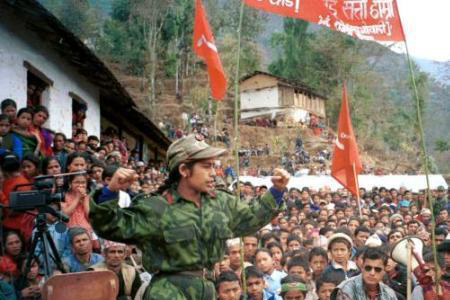
After a decade-long insurgency, the Maoists were thrust to power on the back of a revolutionary wave back in 2006. What did they do? They immediately signed a common 12-Point Agreement alongside openly bourgeois parties like the Nepali Congress party, and the country has been governed by coalitions of so-called ‘communists’ with these bourgeois elements ever since.
Their justification for this was that all ‘progressive’, ‘anti-feudal’ forces had to unite to suppress the monarchy and to build a republic. This would lead to the development of Nepali capitalism that, at a certain stage, would lay the basis for a socialist revolution in Nepal.
But between 2008 and 2025, no progress has been registered. Nepal has fallen from 140th to 145th out of 193 countries in the Human Development Index. Thousands of the country’s youth flee poverty every year to work abroad, to the extent that a third of the country’s GDP is made up of remittances.
Having administered the state on behalf of the capitalist class for a decade and a half, the Maoists’ own politicians have themselves become the subject of the masses’ hatred. They are as mired in corruption as the openly bourgeois parties.
Among the ‘nepo kids’, whose ostentatious wealth sparked the recent events, who do we find? Young people like Smita Dahal, flaunting handbags worth many times the average monthly salary of a Nepali worker, whose grandfather is none other than Chairman Prachanda, the former leader of the Maoist guerrillas.
Colour revolutions?
There is a view – popular among the advocates of the virtues of the new ‘multipolar’ world – that what we are seeing is the very opposite of revolution. They say that these are counter-revolutions or ‘colour’ revolutions. That is, shadowy conspiracies by western intelligence agencies to manipulate the masses.
The same thing has often been said of the Arab Spring, which bore many similarities with the present wave of revolutions. We can understand why some people falsely think it was the work of a conspiracy. The working class in Egypt was not able to seize power. The result? Al-Sisi replaced Mubarak, and things are a hundred times harder today in Egypt than they were in 2010. In Libya and Syria, imperialism was able to plunge these countries into barbaric civil war.
The fact that the focus of the present wave of revolutions is South Asia, and that some of the regimes being shaken lean towards China, lends credence to the idea that this is orchestrated regime change on the part of the West.
There is an irony in the idea that what we are seeing now is a wave of colour revolutions.
The upholders of ‘multipolarity’ claim the left must fight imperialism by supporting ‘progressive’, ‘anti-imperialist’ bourgeois regimes in the ‘Global South’. But they are blind to the fact that the reason the left is so discredited, leaving a vacuum that reactionaries can attempt to jump into, is precisely that the left upheld the same chimera of a ‘progressive’, ‘anti-imperialist’ national bourgeoisie for years!
The idea that these are cases of ‘colour revolutions’ is false. Conspiracies do not explain what we are seeing. But it is a false idea that contains an element of truth. Without revolutionary leadership, counter-revolution can gain the upper hand, the imperialists can find openings to intervene, and things can degenerate in a very reactionary direction.
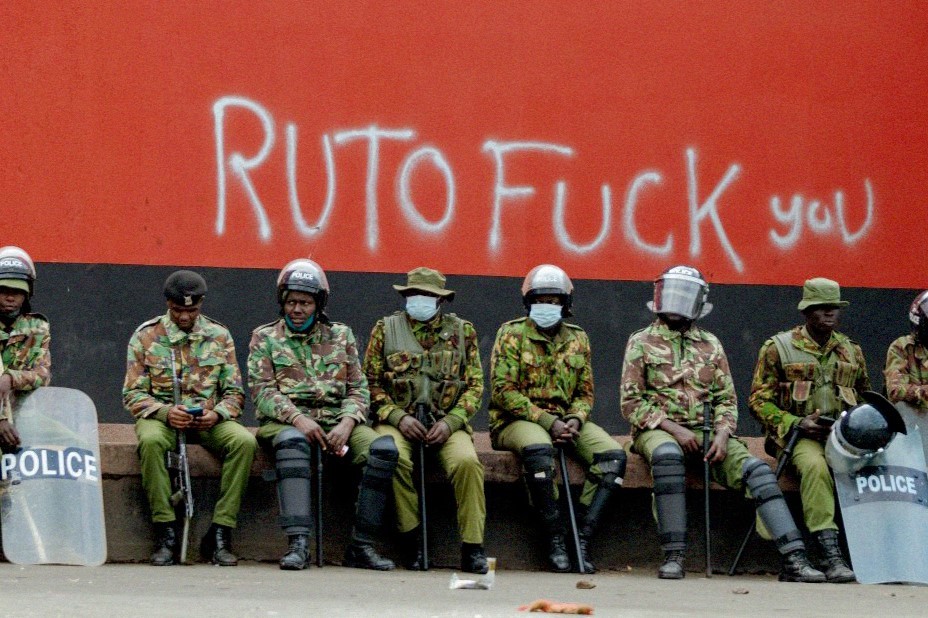
We have to say bluntly that the balance sheet of these revolutions bears this out, and that this is a lesson that has to be drawn.
In Syria, the failure of the revolution to formulate a proletarian programme allowed the imperialists to hijack the movement and turn it into an Islamist insurgency. Likewise, the 2018 Iranian youth uprising, failing to develop a clear class approach, drifted towards the orbit of the western-backed liberal opposition.
And in these more recent examples? In Kenya, Ruto remains in power. It is a cold fact that the youth have failed to bring him down by simple days of action. In Bangladesh and Sri Lanka, the old regime was brought down. And yet, in all three, the governments are carrying out austerity and attacking the working class and the poor at the behest of the IMF. All are compelled to carry out this policy because it is the only policy possible under capitalism.
Amid effusive enthusiasm for the ‘recovery’ in Sri Lanka, until last year, the poverty rate remained double what it was in early 2022. The youth are looking to emigrate if they can, or else find themselves trapped working endless hours to survive. In Bangladesh, some 2.1 million jobs have been lost since the movement in July 2024.
The conditions are continuing to worsen. The fact of the matter is that the root cause of the suffering and discontent of the masses flows from the crisis of capitalism, and these revolutions did not strike at the root of capitalism.
Neither has corruption been ended. In Bangladesh, the student leaders have expended most of their authority. The cherry on the cake is what happened to the quota system that sparked the revolution in Bangladesh. The students mobilised last year in order to end discrimination: specifically, to end the quotas of well-paid public sector jobs for the family members of the veterans of the 1971 War of Independence. It was a system that, de facto, provided jobs for the lackeys of Hasina and the Awami League regime.
That quota system was indeed scrapped… and replaced with a quota system of allotted jobs for the family members of the veterans of the July 2024 uprising!
All that is possible under capitalism is a redivision of the loot, but there is never any end to the looting.
Unfinished processes
Revolutions are not one act dramas, and this isn’t the end of the story. In Sri Lanka, Nepal, and Bangladesh, the hated old regime was brought down. The masses scored initial victories that proved dazzling. But on closer inspection, it turns out that the victory was more apparent than substantial. The head of the regime is gone, but the old state, the old ruling class, still holds power.
There is an analogy between what we have seen here and what happened in Russia in February 1917.
The Russian workers erupted onto the scene in a revolutionary general strike. Within days, the Tsar was forced to abdicate. A provisional government was established. But when the enthusiasm wore off, it was found that the old monarchist generals and bureaucrats remained in place. The capitalists still owned the factories, the landlords still held all the land. It was Tsarism but without the Tsar.
The victory would not be complete until the old state was smashed and the workers themselves took power. That happened in the October Revolution of 1917. And that was only possible because of the presence of the Bolshevik Party that clarified the goals of the revolution and won the working class and the other oppressed masses of Russia to their banner.
Had it been absent, the old ruling class may very well have dragged Russia down into barbarism. Civil war, accompanied by pogroms, would have loomed. In all likelihood, Russia would have been partitioned between the imperialist powers and many millions would have died.
In other words, Russia would have suffered a similar fate to that which Sudan is suffering today. There, the revolutionary masses had a perfect opportunity to seize power in 2019. The leadership let it slip by, and now the country is being torn to pieces by a barbaric civil war between two reactionary armed gangs and the various imperialist powers that stand behind those gangs.
Of course, such a devastating reactionary outcome as we are seeing now in Sudan is by no means inevitable. The strength of the working class and a whole host of other factors come into play in determining the outcome. But it is nevertheless a brutal warning.
Who is next?
The revolutionary events we’ve seen will probably continue to play out over a number of years in Sri Lanka, Bangladesh, Nepal, Indonesia, Kenya and elsewhere. There will be ebbs and flows and no doubt even new insurrectionary risings.
If the history of Bolshevism from 1903 through to 1917 teaches us one thing, it is that a party must be built in advance of the revolution if it is to play a decisive role. We hesitate to say that a revolutionary party cannot be built under conditions of revolution, but doing so is not an easy task.
We direct what we have to say now, then, to the most advanced revolutionary workers and youth around the rest of the world that have not yet been rocked by revolution. The task of building the revolutionary party must be urgently undertaken, now! All these instances that we have listed point to that fact.
Time is required to build the cadre of a future mass revolutionary party. Time is not something that we have in abundance. The conditions that birthed the revolutions in all the countries previously mentioned are rapidly maturing everywhere.
It is striking how similar the conditions were that produced these revolutions.
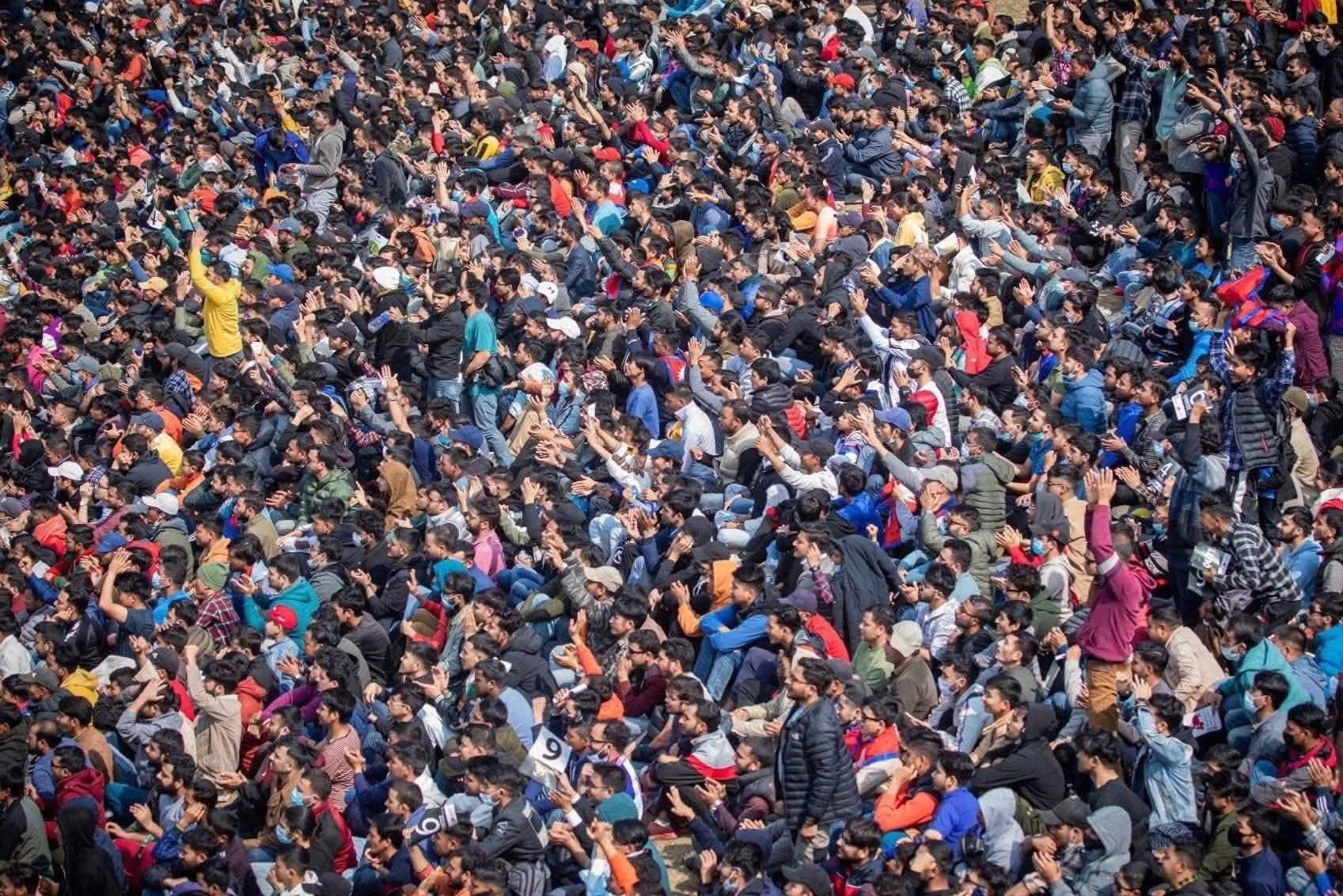
On the face of it, these were not even the most crisis-ridden countries in the world. Far from it. They were booming at rates that would make economists in the advanced capitalist countries green with envy.
Between 2010 and 2024, excluding the pandemic year of 2020, Nepal experienced an average 4.7 percent annual growth; Kenya 5.2 percent; and Indonesia 5.23 percent. Sri Lanka entered into crisis earlier, but in the years 2010 to 2018, it too experienced an average growth of 6.43 percent per year.
But scratch the surface, and what did you find? Extremely uneven, ‘jobless’ growth, persistent poverty, and a mountain of unpayable usurious debt owed to the imperialists. Most threatening for the ruling class, high youth unemployment and a lack of any decent future is a common theme.
In Sri Lanka, youth unemployment was at 25 percent in 2021, four to five times the average rate. 7 million of Indonesia’s 44 million youth are unemployed. In Bangladesh, less than one in five 25-29 year olds has a secure job with a contract that lasts longer than a year. Before the pandemic, 39 percent of graduates were unemployed in Bangladesh.
“We’ve no jobs and no future,” as one Kenyan youth put it, “so we’ve all the time in the world to overthrow you, and nothing to lose by fighting you.”
Are these unique features of these countries? They are not. They are remarkably similar to the conditions in many, many countries.
As of 2023, 21 countries, home to 700 million people, were bankrupt or on the brink of bankruptcy. 3 billion people worldwide live in countries that spend more on paying debt interest than on healthcare or education.
Even during the ‘good times’, the masses were already straining to keep their noses above the rising water line. This is especially true of poor and so-called middle-income countries, which did not have the reserves necessary to weather the ravages of the crisis that broke out with the COVID-19 pandemic.
When revolution gripped Sri Lanka in 2022, we predicted that similar events would be visited on one country after another because they share the same fundamental features. And so they have, and we confidently predict that the long list of countries isn’t complete yet. The ruling classes of India and Pakistan – and their many ‘nepo kids’! – must be shaking in their boots watching these scenes unfold.
This revolutionary wave has begun in the poorer, less developed countries, but it will not remain restricted to them. As Trotsky explained, “Gout begins with the little finger or the big toe, but once it has begun it progresses till it reaches the heart.”
The flames of revolution are already licking at the edges of Europe in Serbia, and the bloquons tout movement in France shows that revolution will indeed work its way to the heart. The world is on fire, and revolutionary explosions are on the order of the day. We have to absorb this fact, and everything that flows from it in terms of the responsibility that places on us as revolutionaries to build with urgency.

